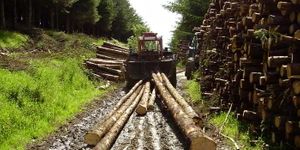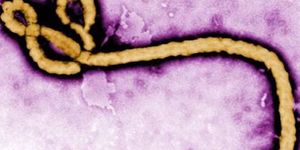Investigating the Origins of Life
It has been suggested that life on earth began in a kind of stew where molecules interacted and accumulated, coming together under the right conditions and giving rise to the first lifeforms. This primordial soup has been suggested to contain molecules that were like RNA - what organisms use today to translate genetic information into proteins, which carry out and construct essential cellular processes. Now scientists have engineered a system that can replicate genetic information in a way that is unlike anything in our world today. Reporting in eLife, they have made an organelle called a ribozyme that can replicate RNA; that supports the idea that it could help give a thing life.
The researchers, from Medical Research Council (MRC) Laboratory of Molecular Biology followed up on the idea of RNA as an essential part of the primordial soup. Ribozymes, which are just folded up pieces of RNA that act as enzymes, were shown to be able to make RNA that can fold into three-dimensional structures, including more ribozymes.
Typically, as RNA is copied one base is added to a string of bases one at a time as an RNA strand is built. But the ribozyme the researchers made adds three joined bases at once, as a triplet. That addition of triplicates allows the ribozyme to replicate folded RNA; triplets bind to RNA so strongly that it makes the RNA unravel. That enables a ribozyme ty copy it’s own folded strands of RNA.
While a primordial soup may have contained a jumble of nucleotide bases in a variety of lengths, strings of three bases worked best. Longer strings tended to introduce errors, the scientists noted.
"We found a solution to the RNA replication paradox by re-thinking how to approach the problem - we stopped trying to mimic existing biology and designed a completely new synthetic strategy. It is exciting that our RNA can now synthesize itself,” said senior author Dr. Philipp Holliger, from the MRC Laboratory of Molecular Biology.
"These triplets of bases seem to represent a sweet spot, where we get a nice opening up of the folded RNA structures, but accuracy is still high. Notably, although triplets are not used in present-day biology for replication, protein synthesis by the ribosome - an ancient RNA machine thought to be a relic of early RNA-based life - proceeds using a triplet code.
"However, this is only a first step because our ribozyme still needs a lot of help from us to do replication. We provided a pure system, so the next step is to integrate this into the more complex substrate mixtures mimicking the primordial soup - this likely was a diverse chemical environment also containing a range of simple peptides and lipids that could have interacted with the RNA."
From previous work, the researchers knew to conduct their experiments at -7ºC. The RNA is concentrated by the cold in a liquid brine that sits in gaps between ice crystals. It’s also good for the enzymes they used, which have greater stability and improved function at that temperature.
"This is completely new synthetic biology and there are many aspects of the system that we have not yet explored,” added Holliger. “We hope in future, it will also have some biotechnology applications, such as adding chemical modifications at specific positions to RNA polymers to study RNA epigenetics or augment the function of RNA."
"This is a really exciting example of blue skies research that has revealed important insights into how the very beginnings of life may have emerged from the 'primordial soup' some 3.7 billion years ago. Not only is this fascinating science, but understanding the minimal requirements for RNA replication and how these systems can be manipulated could offer exciting new strategies for treating human disease,” said Dr Nathan Richardson, Head of Molecular and Cellular Medicine at the MRC
Sources: AAAS/Eurekalert! via Medical Research Council, eLife










